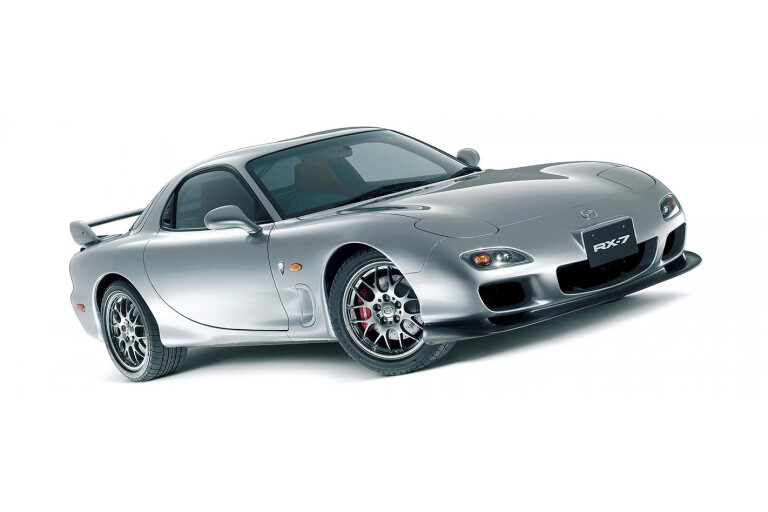
DON’T expect the return of the Mazda RX-7 – or any Mazda rotary – any time soon.
Mazda says rumours of the return of the RX-7 sports car are premature, with the brand’s managing executive officer emphatically saying the project is “entirely off”.
“Using [a] rotary engine has been completely off,” said Masahiro Moro, in Los Angeles for the global reveal of the CX-3 compact SUV.
But the man in charge of global marketing for Mazda said development of the rotary engine continues, with the door left open to return the iconic engine configuration to the brand in the longer term.
“Rotary engine development has continued – the engine development project itself,” said Moro. “If we use this rotary engine into mass production car, that project has not been on.
“We have not put our entire resources, we have allocated some resources.”
But he was adamant there was no approved program and work had not started on adapting the rotary engine to the Mazda MX-5 platform, something that has been rumoured since the early 2000s.
“We never ever put a program of a sports car,” said Moro. “That is not on or off – [it is] entirely off. Using [a] rotary engine has been completely off.”
Moro suggested there was lots of work to be done to ensure the rotary engine met future fuel economy and emissions requirements.
“We have continued to develop until that is relevant to today’s environment and requirement.”
Moro also said there were various applications where the rotary could be used, including as a generator or range extender for an electric or hybrid car.
The rotary has a wider variety of capability,” he said. “It could be used for generator, could be used for hydrogen, could be used for normal combustion engine.”
Moro said the focus for Mazda for until at least 2017 was on core models, such as the just-released CX-3 and CX-5 SUVs, and the 2 and 3.
“Our focus is how we’re going increase sales … with existing product line. That’s our focus for the next two years.”
He also pointed to upcoming emissions regulations and the upcoming introduction of SkyActiv 2 engine technology – claimed to reducing fuel use by 30 percent – as crucial for the second half of the decade.
“At this juncture I think the biggest hurdle we jump over is 2020 in Europe – 95 grams of CO2 emissions.
“We have lots of study [to see] what technology enables us to [achieve that].”

COMMENTS